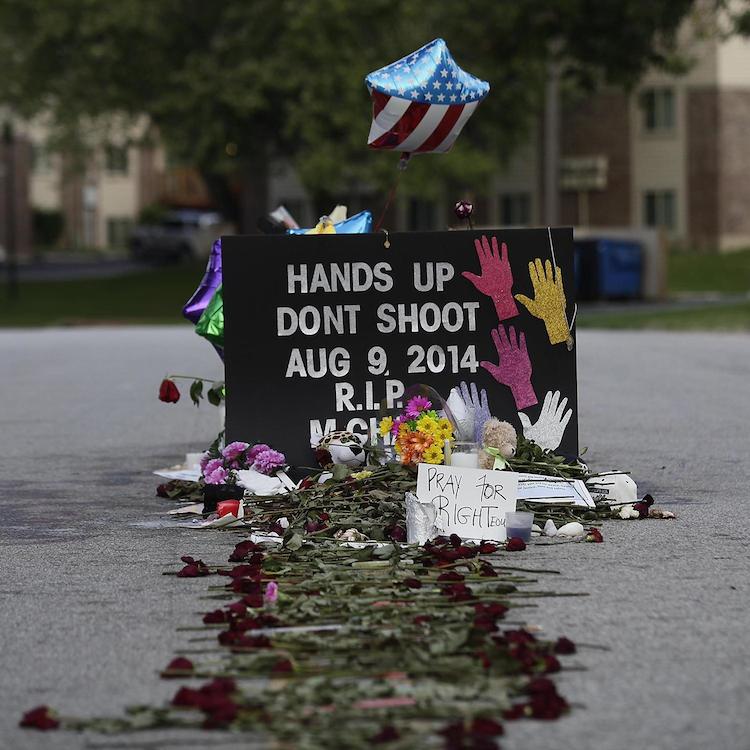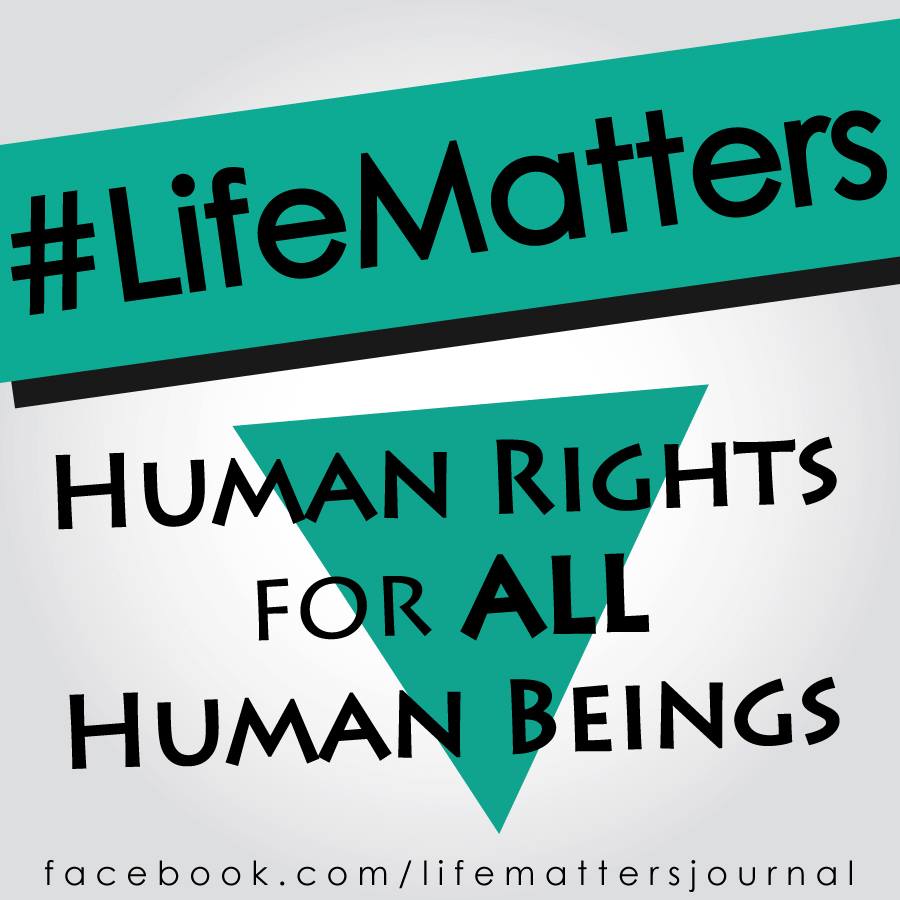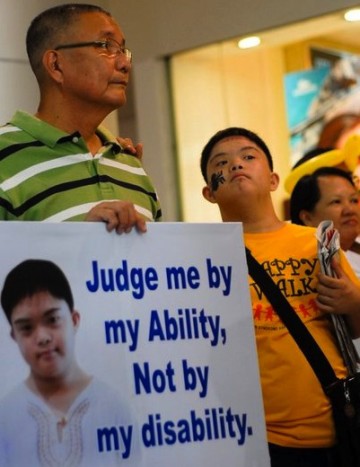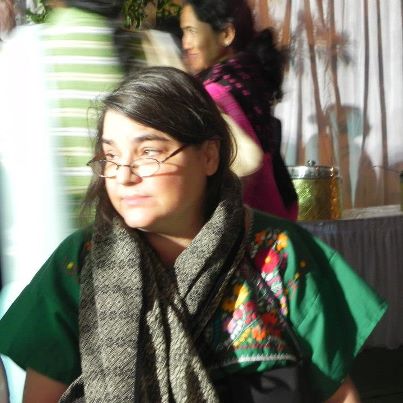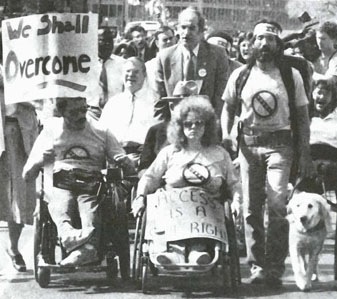RH Reality Check has published yet another article extolling abortion in the case of fetal disability. (I use the word extoll because these articles portray fetal disability as a a particularly important reason for pro choice policies. By using disability in this manner, disability-selective abortion is extolled-it is portrayed as something positive that needs to be preserved). Many of us at All Our Lives follow the site, and our own Mary Krane Derr has written articles for them in the past. Yet, we have noticed a pernicious pattern of ableism that permeates the site. By this I mean that the perspectives of the disabled community and issues facing that community are rarely acknowledged. Ablebodied perspectives dominate, and abortion is often cited as an important tool for the prevention of disability. Recently, the site published an article entitled, Disability, Prenatal Testing, and the Case for Moral, Compassionate Abortion.” Despite the editors eventual decision to allow a disability advocate to respond to this article, I feel that a sense of tokenism overshadows that decision and that further analysis is necessary.
The piece is so full of ableist preconceptions and misinformation that it is impossible to address them all in a single blog post. Therefore, I have decided to complete a series responding to the issues she addresses. In this blog post, I will explain why Sierra’s piece is condescending, ahistorical, and embraces eugenic ideas related to the continued influence of ableism in our culture. I will also consider the issue of ablebodied privilege and its influence on discussions related to ableism and selective abortion. Moreover, my approach to this issue reflects personal beliefs and experiences that not every All Our Lives board member shares. While we are united in our desire to see such abortions end, we may not all take the same approach to addressing this issue. Finally, before I begin I will briefly address the pain that parents who interrupt pregnancies impacted by a prenatal diagnosis may feel when reading a disability rights analysis of such decisions.
A Brooding Conflict
The intensely personal, private and painful nature of abortion for fetal anomaly makes this subject difficult to address. Many pregnancies terminated for reasons of fetal anomaly were wanted. These parents may feel that they did not “terminate a pregnancy,” but released their child’s spirit and/or saved him or her from a lifetime of suffering. These parents were motivated by feelings of love. Hence, it is extremely painful for these individuals to hear that their agonizing choice was at least partially influenced by ableism. Nevertheless, I do not feel that this is something disability advocates can avoid when discussing the social pressures that contribute to disability-selective abortion. As Amy Sequentia, a nonverbal autistic rights advocate notes, “We don’t hate parents but we are not going anywhere. We will continue to talk and write about the need for acceptance – ours and their children’s. Autistic children are part of the autistic community. And we will point out the flaws in the autism “advocacy” organizations – they never invite us when talking publicly about autism.” Similarly, any discussion of reproductive rights and disability is going to involve difficult discussions about ableism, and that is going to come up in reference to the painful decisions parents make to terminate wanted pregnancies. Hence, I want to invite everyone reading this to try and do so with compassion for themselves and for the moral challenges we all face as we undergo the difficult experience of being human.
Logical Inconsistency
Women have abortions for a plethora of reasons, only one of which is fetal disability. Sierra has argued that advocates’ objections to disability-selective abortion conflate fetuses with born children, yet she has chosen to specify these abortions as specifically “moral and compassionate,” a distinction which depends upon her perceptions of people who are alive right now. In order to argue that preventing someone’s birth is compassionate, one must make judgments about the experiences of people who are leading lives similar to that which the fetus is expected to lead. One must conclude that these experiences are sufficiently horrific to make not being born preferable to living that life. Hence, specifying those particular abortions as compassionate while not categorizing the moral nature of other abortions DOES send the message that people with disabilities are better off not being born. Without such judgments, the decision making process related to these abortions could not take place.
Tone:
Sierra has a profoundly condescending tone toward her audience. She begins the article by saying:
“Note: If the headline didn’t already clue you in, this is controversial subject matter. If you come away from this article thinking that I advocate genocide of a disabled population or the coercion of women pregnant with disabled fetuses into abortion, that I hate disabled people or think that Down syndrome people don’t deserve to live, you have failed to understand my point. Please walk away from the computer, breathe deeply, and start again from the beginning… if you’re already angry, please stop reading and go get yourself a nice cappuccino. Have a beautiful day. And then, if you still really want to read this, take frequent breaks to punch a pillow with a “hello, my name is Sierra” badge stuck to it.”
This statement a) trivializes legitimate objections to her argument, b) insults the maturity of those who hold such objections by suggesting that we are incapable of responding to her article in a calm manner, c) insults the intelligence of her readers. (Really, this is controversial subject matter? I totally didn’t know that: thanks for telling me!)The pseudo-levity of her remarks attempts to make righteous indignation the stuff of humor. Reading that paragraph is like being talked-down to by a preschool teacher: “Oh, honey, these issues are just too complicated for your little mind to understand. Here, have a cookie.”
Token “Support”/Ahistoricism
Sierra goes on to write, “The disability rights movement is hugely important and I support it. It’s especially vital for individuals with mental illnesses, who are often judged as “not really disabled” because there’s nothing visibly wrong with them. Disabled people have a long history of being medically abused, used as test subjects without consent, being abandoned or forced to live in squalor, and being generally reviled, disrespected and treated like freaks. We need a movement to rectify that and prevent it from ever happening again [my emphasis]. I’m glad we have one. Now. Here’s where I depart from Zylstra and other activists…” Sierra’s statement ignores the fact that the mistreatments she attributes to the past still go on today. (Perhaps her use of the term “rectify” in the present tense was meant to be an acknowledgement of this fact, however, her statement still puts the burden of social change squarely on the shoulders of the disability rights movement. It fails to acknowledge or reflect an understanding of the fact that disability rights impact everyone and, thus, should be everybody’s fight.) Moreover, her proceeding argument completely ignores the fact that these problems are caused by society, not by being disabled. If those abuses were to cease, people with disabilities could go on being disabled without their disabilities being an impediment to their well being, because the world would be a hospitable place for people of all abilities.
Sierra also seems to ascribe a disproportionate amount of historical and epistemological importance to her article. Shortly before launching into a discussion of “fetishism,” she writes, “Okay, now let’s go on (assuming you’re not already plotting my demise)…” Contrary to her rather aggrandizing conception of this essay, Sierra’s argument isn’t new. It certainly isn’t going to shock disability activists and allies into “plotting her demise.” Disabled people have always dealt with the influence of such attitudes, whether they manifested in Plato’s suggestion that the state control procreation, or the early eugenicists’ efforts to sterilize those they viewed as disabled. Statements of approval for that effort have been percolating in our collective consciousness since time began. Moreover, while Sierra may not consciously support eugenics, she is accepting the ableist ideas upon which this movement was based. Ie, the fact that Sierra doesn’t want to resurrect the original eugenics movement and force people to be sterilized or euthanized against their will has no bearing on the existence of this phenomenon. Eugenic ideas still exist because ableism does, not because people who hold those ideas are part of an evil conspiracy.
The tendency of geuninely good people to embrace ableist ideas can be seen in the plethora of respected leaders who supported the original eugenics movement. Plato, Oliver Wendel Holmes, WEB DuBois, and even Helen Keller (Pernick, 103) supported eugenic philosophies. Sierra’s argument is also not unique in contemporary discourse. Contemporary articles and statements in support of disability-selective abortion have been made by Joycelyn Elders (Freedom of Choice Act of 1989: Hearings before the Committee on Labor and Human Resources, United States Senate, One Hundred First Contress, second session on S. 1912, to protect the reproductive rights of women, and other purposes, March 27 and May 23, 1990, Reprints from the collection of the University of Michigan Library, pg. 199). Virginia Ironside, Claire Raynor, Peter Singer, Julian Savulescu, and a host of other individuals. Sierra’s argument simply isn’t the theoretical breakthrough that she seems to think it is.
Sierra attempts to distance her article from its connotations of ableism by stating: “I believe that it is possible and desirable to respect disabled people while still working to eliminate genetic disorders so that children who might have had Down syndrome or cystic fibrosis (or any other disease) have a chance to be born without them. I believe that abortion of a disabled fetus can be a compassionate choice made for morally sound reasons, and does not at all conflict with the respect due to disabled people. I am firmly pro-choice, and I believe strongly that the wellbeing of all born persons in a family is paramount before considering the needs of a fetus. My position is that fetuses are incapable of being self-aware and therefore cannot experience suffering the way born persons do. The prevention of suffering is central to my moral beliefs.”
In short, Sierra is saying, “I’m not an ableist person.” This, however, ignores the systemic phenomenon of ableism by which her view of disability is impacted. Perhaps part of Sierra’s ignorance can be attributed to the so-called “hierarchy of oppression” that hinders the discussion of ableism and pits issues of disability against those related to other minority groups. It’s likely that people who attend diversity assemblies at their schools are never told that diversity includes disability. While race, gender, religion and sexual orientation are discussed, disability is rarely, if ever, addressed. History classes ignore the disability rights movement, the murder of disabled people during the Holocaust, the original American eugenics/euthanasia movement, and other aspects of disability history. If curricula included this information, perhaps Sierra would have a better understanding of why her article reflects prejudiced attitudes. Despite Sierra’s attempt to distance “the prevention of suffering” from the oppression of disabled individuals, an examination of history reveals that this sentiment was shared by many eugenics supporters, many of whom felt sympathy for individuals who they felt were leading inferior lives. Even the US Eugenics Records Office, in their 1914 recommendations for the prevention of disability, argued:
“With euthanasia, as in the case of polygamy, an effective eugenical agency would be purchased at altogether too dear a moral price. Any individual once born should, in the opinion of the committee, be given every opportunity and aid for developing into a decent adulthood of maximum usefulness and happiness. Preventing the procreation of defectives rather than destroying them before birth, or in infancy, or in the later periods of life, must be the aim of modern eugenics.”
Like Sierra, the people who wrote this report had feelings of charity towards disabled individuals. They did not recognize a connection between their efforts to prevent such births and the oppression of disabled people. Similarly, Alexander Grahm Bell tutored many deaf people in lip reading and elocution, but his attempts to “integrate deaf people into society” were partially motivated by his desire to keep deaf couples from meeting, forming relationships, and procreating. In fact, Bell’s own words in support of mainstreaming the deaf closely mirror Sierra’s acknowledgement of the abuse disabled people have historically experienced. In 1883, Bell gave an address to the National Academy of Science in which he stated that laws forbidding the intermarriage of deaf individuals were not enough. Rather, the integration of deaf individuals and the subsequent dissolution of deaf communities was paramount. In support of this solution, Bell argued:
“Whatever the cause, it is certainly the case that adult deaf-mutes are sometimes hampered by the instinctive prejudices of hearing person with whom they desire to have business or social relations. Many persons have the idea that they are dangerous, morose, ill-tempered, etc. A deaf person is sometimes looked upon as a monstrosity to be stared at and avoided (Shapiro, 97).”
Because of his strong language in support of integration, Bell was regarded as a champion of the deaf, but his influence lead to a moratorium on the teaching of ASL. (Shapiro, 94-98). Like Sierra, Bell saw himself as a “supporter” of the disability rights movement. Looking for the cause of antipathy toward the disabled within his own ideology never occurred to him. He never physically harmed a deaf person, and he was probably fond of the deaf students he worked with. I’m sure that some of those students benefited from his instruction, but because he nurtured what seemed to him to be the self-evident belief that people were better off not being born deaf, he harmed the deaf community.
Sierra has embraced the same fallacy. It is not possible to support the elimination of something without acceding to its inherent inferiority. The belief that the prevention of disability via selective reproduction has a special moral status is eugenic thought, even if that philosophy isn’t forced unto others via legal means. One cannot be a legitimate ally and suggest that we ought not to be born as we are. That position does, in fact “conflict with the respect due to disabled people.” It strips us of our identity and boxes us into a caricature of personal tragedy.
Privileged Assumptions
In between insulting her audience and suggesting that her detractors head to the nearest Starbucks, Sierra makes huge assumptions about things that she has not experienced. She bases her assumptions about disability upon her experience of growing up in poverty. The two are simply not the same thing. While issues of class and disability certainly intersect, being an impoverished non-disabled person does not confer knowledge of what it is like to live as a disabled person of any economic background. She “wagers” that the disabled wouldn’t have chosen to be disabled, an assumption based entirely on hubris. As a person with Nonverbal Learning Disorder, I think that some of the social cues that I have difficulty picking up on are bizarre, immoral and destructive. I do not feel that being born non-disabled and growing up to accept these practices as “normal” would have benefited me. Most people I know in the disability rights and studies communities embrace their disabilities as a fundamental part of their identities that should not be changed. A colleague of mine expressed this sentiment well when he said, “Without dwarfism, there is no Joe.”
Perhaps Sierra’s tone and logical inconsistency are related to her own unacknowledged privilege. Despite Sierra’s experience of childhood poverty, she does not seem to recognize that like affluence, able-bodied-ness is a privileged status subject to social influences. Because she doesn’t realize that being able-bodied predisposes her to view that status as universally desirable, she assumes that all disabled people want to be able-bodied like her. She locates the problem of disability oppression within disabled bodies themselves rather than in the attitudes of our society. (Moreover, despite her comparison of disability to the poverty she experienced, I don’t see her using that circumstance to defend “moral and compassionate” abortion for would-be indigent fetuses…)
The same issue of privilege impacts conversations about ableism and selective abortion. Most people defending such abortions have had the privilege of assuming that able-bodied-ness is the state against which the experience of embodiment will be measured. Telling these people that able-bodied and disabled are social constructs conflicts with everything they have been taught to believe. Moreover, like racism, people tend to define ableism as a personality flaw rather than a systemic phenomenon that drives oppression. Alan B. Johnson expresses this difference succinctly in Privilege, Power and Difference when he writes: “Racist isn’t another word for ‘bad white people,’ just as patriarchy isn’t a bit of nasty code for ‘men.’ Oppression and dominance name social realities that we can participate in without being oppressive or dominating people (Johnson, 10).” This is also true of ableism. It’s not that Sierra, the editors of RH Reality Check, or parents who terminate pregnancies impacted by disability are bad people, but they are impacted by an oppressive system that defines able-bodiedness as the norm and encourages the elimination of characteristics that deviate from that state (disability). Hence, it is possible for them to behave according to ableist preconceptions without harboring malice toward disabled individuals. This is something that Sierrra fails to recognize.
As shown in the comment section, the author of the original article has written a response to my critique. It can be found here.

